
Antennas for a cellular signal amplifier can be divided into two main families: omnidirectional (they radiate in all directions) and unidirectional (they radiate in only one direction). There are intermediate models, which are improperly called semi-directional: these are, in fact, antennas that are not completely omnidirectional without being completely (uni)directional either. This is the typical case with ceiling antennas, which radiate 360°, but only below them: the shape of their coverage area therefore looks like a semi-sphere.
Without going into the ultra-technical aspect of wave scattering, which is the subject of a whole scientific literature in its own right, let us try in this article to shed some light on the basic principles of directivity of our antennas associated with cellular signal amplifiers; purists of terrestrial broadcasting (or geometry in space) forgive some shortcuts in vocabulary!
- Omni-directional antennas
- The semi-directional antennas
- Directional antennas
- Which antenna to choose for a signal amplifier?
1. Omni-directional antennas
These are the most common in our daily environment: the folding antenna of the small FM radio in the kitchen, the antennas on trucks, the small black antenna on the back of the Wi-Fi box, etc. It is a "wire" of a specific length that picks up or emits radio waves.
1.1 The whip antenna
It is the famous strand above: the emission (or reception) is ideal in the horizontal plane, and the emission radiation spreads 360 degrees.

1.2 The marina omni antenna
This antenna works on exactly the same principle as the whip antenna, plus it is wrapped in a durable fairing adapted to the conditions of use at sea or in a saline environment.
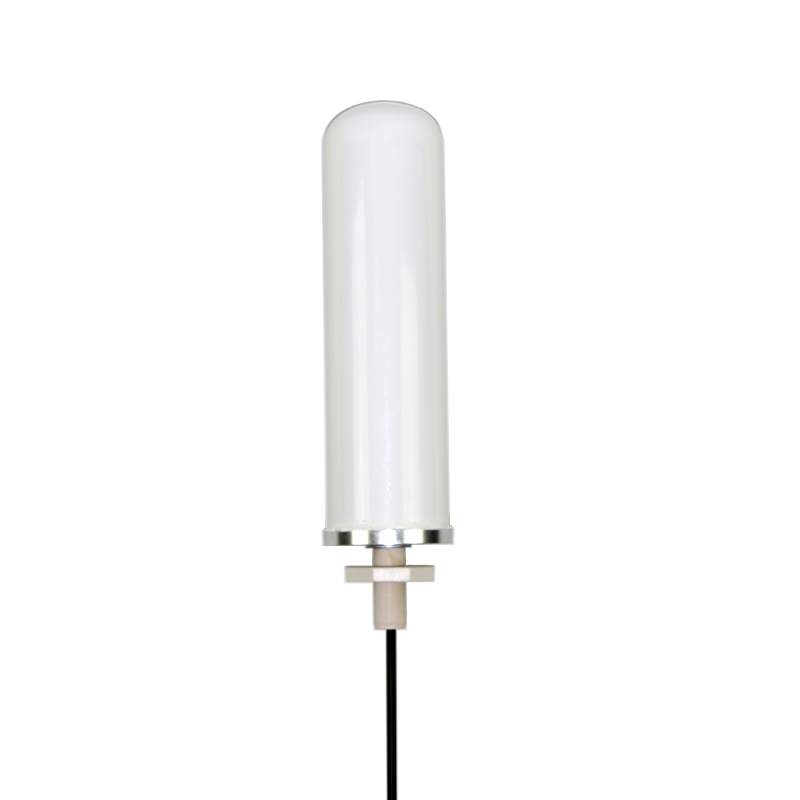
2 The semi-directional antennas
As the name suggests, these antennas are nearly omnidirectional. In practice, one of the transmission planes has been neutralized, usually horizontally, so that all power is returned only in the desired directions.
2.1 The ceiling antenna
This ceiling antenna is capable of broadcasting in all directions in the area below. Once attached to the ceiling, the waves will spread downward and sideways, 360°, but not upward. In other words: this antenna "waters" like a shower!
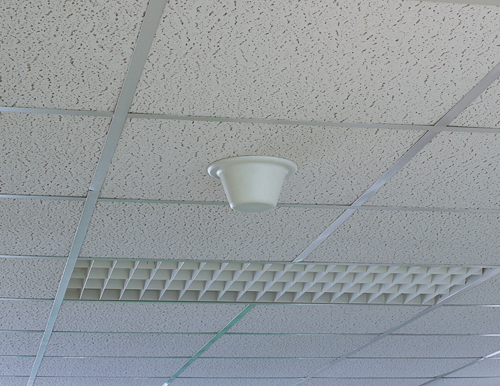
2.2 The panel antenna
The panel antenna works on the same principle as the ceiling antenna, this time in a vertical position. Waves are directed as far in front of the antenna as possible, neutralizing rear side scattering, which is not desired in this case..
The rectangular shape allows the diffusion to be concentrated on the horizontal plane, so that it radiates toward the center of the room, rather than the ceiling or floor.
Seen from above, this is what the antenna spread zones described above look like.
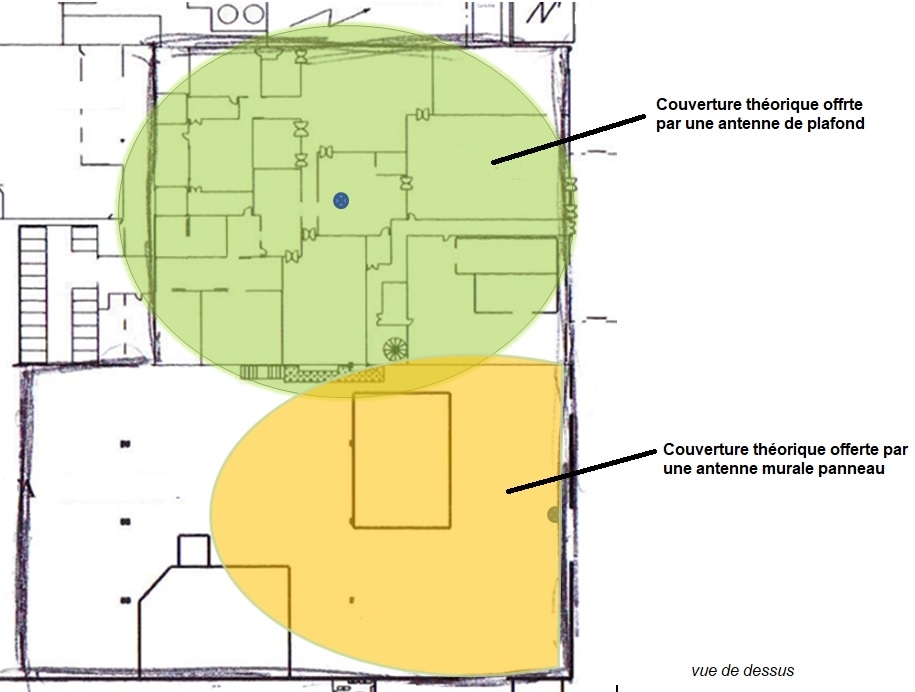
3. Directional antennas
As the name suggests, these antennas transmit mainly in one direction, toward which they must be pointed. They are, indeed, highly directional antennas.
Its installation is slightly more delicate than an omnidirectional or semi-directional antenna: one wrong angle of the antenna and the transmission area changes completely, as shown below.
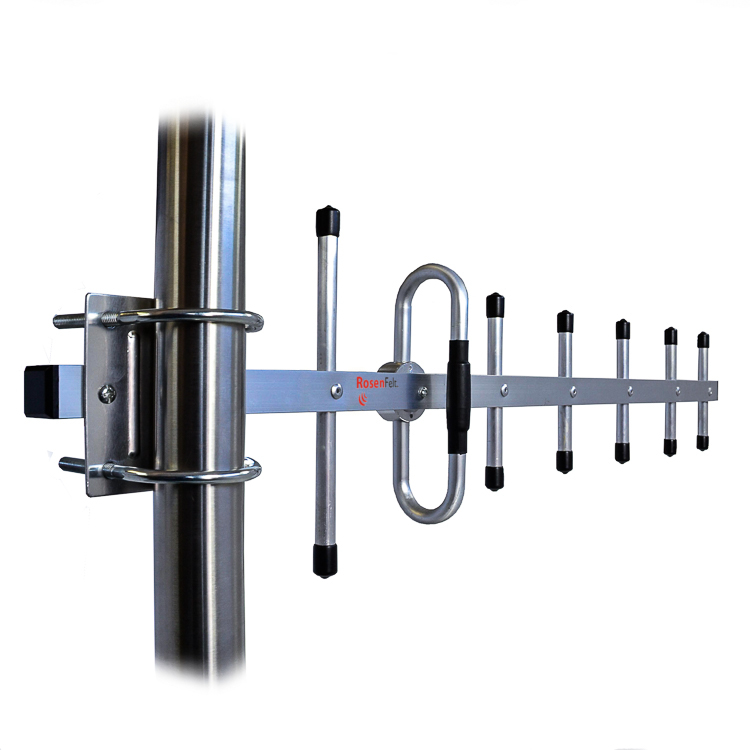
![Par Pas d’auteur lisible par la machine identifié. Elivadiotti supposé (étant donné la revendication de droit d’auteur). [Public domain], via Wikimedia Commons Antenne directionnelle](https://upload.wikimedia.org/wikipedia/commons/7/79/Depointage.gif)
3.1 The Yagi logarithm antenna
The so-called logarithmic antenna is a 'very directional antenna with an aerodynamic shape.
Our Yagi and Yagi Super logarithmic models are very versatile and cover different frequency bands: GSM, 3G and 4G simultaneously.
Some other models, however, are designed for a single-band signal amplifier, for example, the Yagi 7 antenna is only compatible with the GSM 900 MHz band.
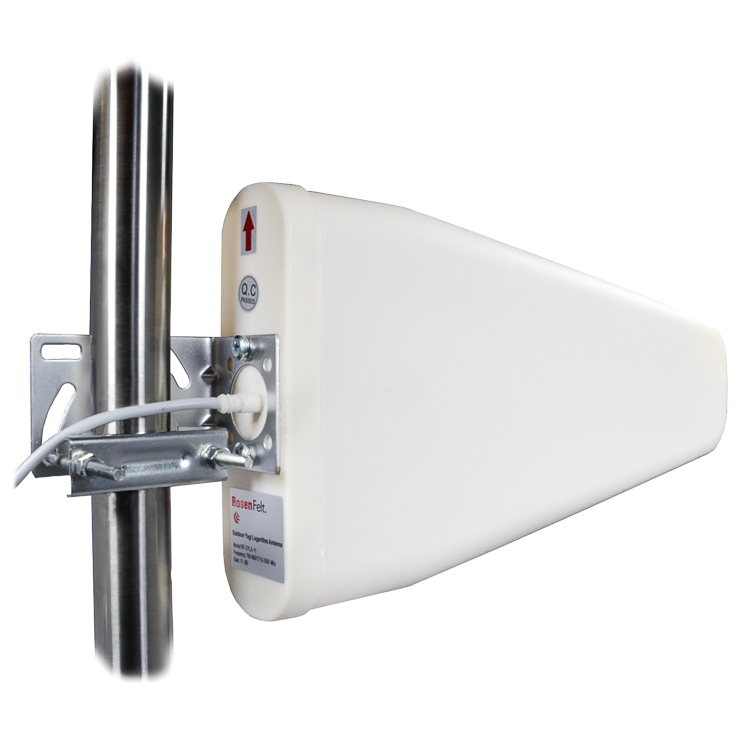
4. Which antenna to choose for a signal amplifier?
All of our standard GSM amplifier kits also contain one outdoor and one indoor antenna. However, you can choose a customization for your indoor or outdoor GSM 3G 4G antenna to meet your specific needs. Here is some information to help you make the right choice.
4.1 For the outdoor antenna
When the external signal quality is good, it means that the towers (radio base stations) are at close range: an outdoor panel antenna, the one provided by default in most of our kits, is sufficient in this case.
Instead, when the signal quality is rather poor, we will have to "concentrate" the signal more to receive and retransmit using a directional antenna. In this case, depending on the distance between your building and the radio base station, we will take care to choose the appropriate logarithmic antenna.
Up to a distance of 4 km, a Yagi logarithmic antenna is needed.
Up to distance of 10-12 km, a Yagi Super Logarithmic antenna is needed.
4.2 For the indoor antenna
The choice will be dictated by the conformation of the indoor environment to be covered. Here are some examples.
An office of 100m² (10mx10m) on one level: the whip antenna (provided in standard kits) is suitable. If the room has a false ceiling, the circular ceiling antenna will be the best choice for more even coverage.
An American-style space of 600 m² (about 25x20 m); a ceiling antenna, placed in the center of the room, is ideal. If ceiling installation is not technically possible, opt for panel antenna, to be placed mid-length on one of the walls.
One level of 650m², but divided into several rooms separated by concrete walls: one antenna is needed per room, usually two or three in total.
An underground parking lot of 5000 m² (2 levels of 50 x 50 m each): at least 4 antennas per level, either ceiling mounted (to be fixed on existing ducts or pipes) or wall mounted.
Contact us for this type of project: our team can recommend the right signal amplifier and antennas and help you with interference between antennas Interference - The most common problem with a GSM repeater .